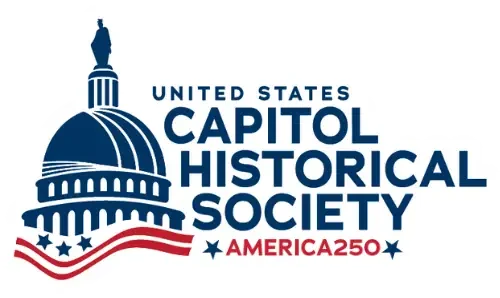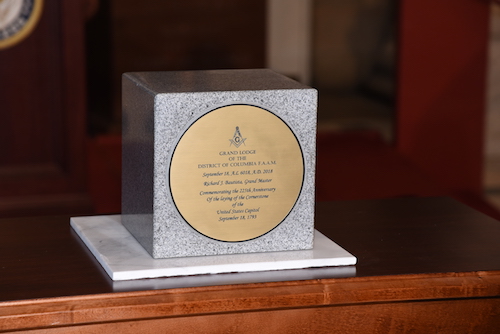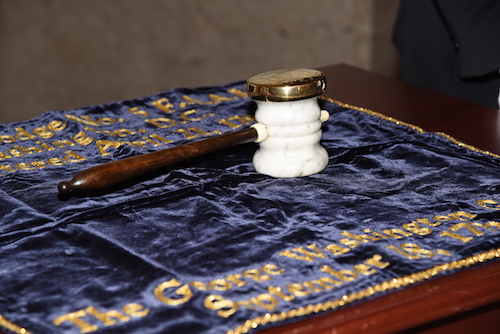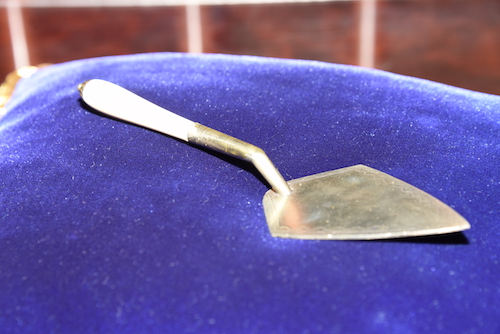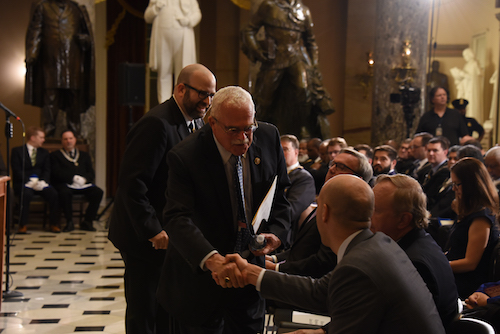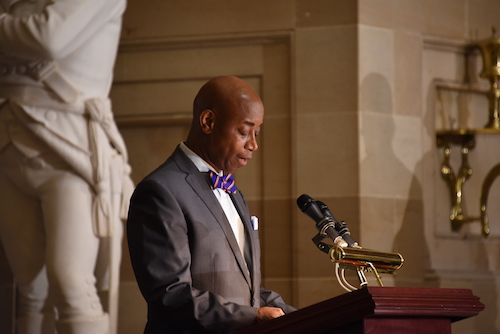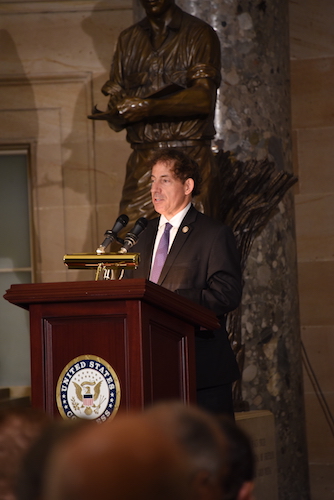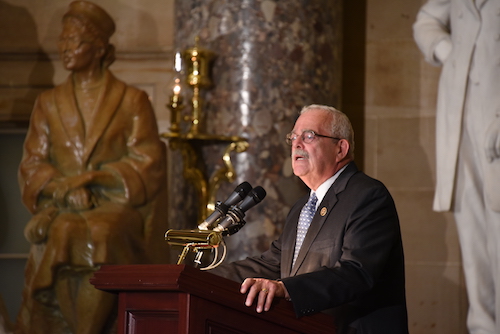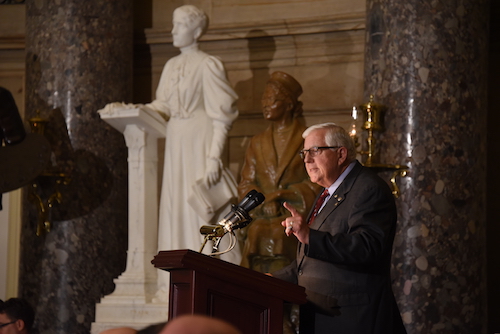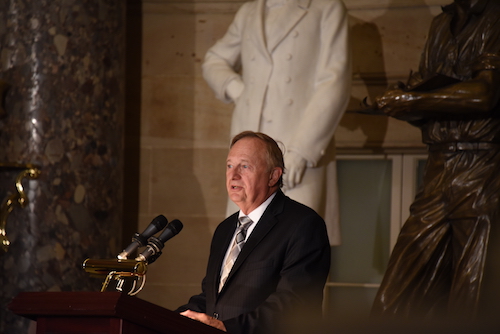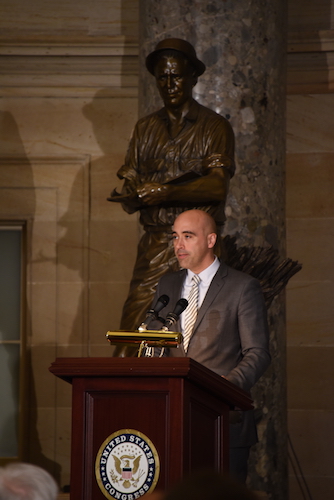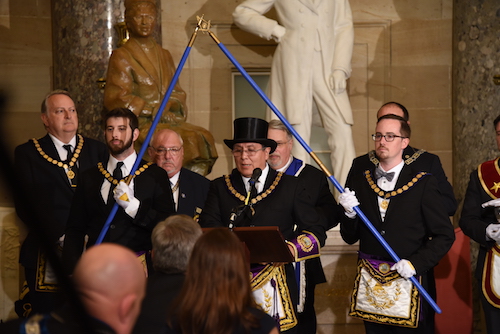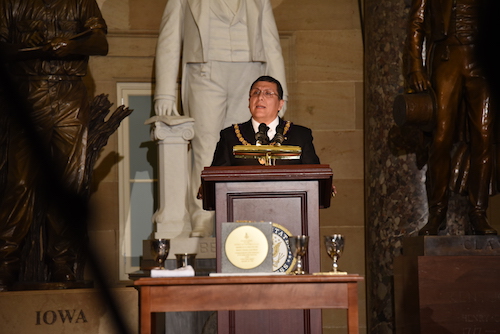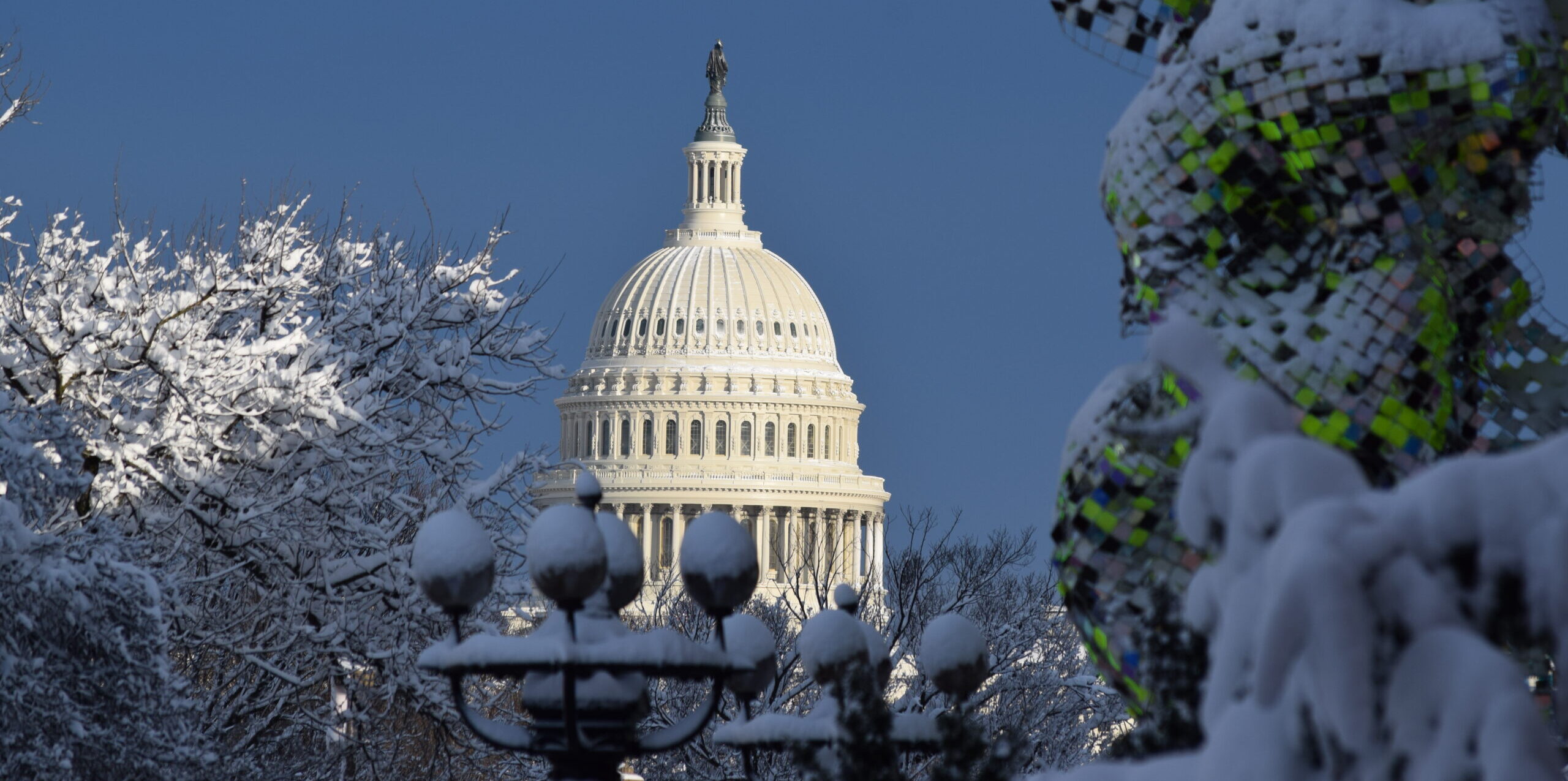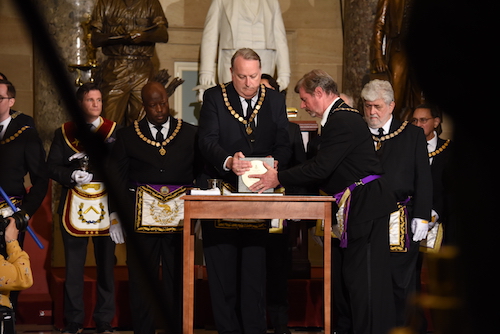
On Tuesday, September 18th, 2018, the 225th Anniversary of the Laying of the Capitol Cornerstone was commemorated with a ceremonial reenactment. Organized by the Office of Senator Ron Wyden (OR), the event featured Members of Congress, officials from the United States Capitol Historical Society and George Washington’s Mount Vernon, and a group of Washington-area Freemasons bearing with them artifacts from the original ceremony. Following the Presentation of the Colors by the U.S. Armed Forces Color Guard and a performance of the National Anthem by the U.S. Army Brass Quintet, an invocation was made by Dr. Barry C. Black, the Chaplain of the U.S. Senate.
The Honorable Stephen T. Ayers, Architect of the Capitol, delivered opening remarks which noted that “our culture is rich in tradition of celebration” around edifices from groundbreakings to cornerstone layings to ribbon cuttings, and how our national motto of E Pluribus Unum reflects the contributions of “the many workers, artists, laborers, architects, and engineers who created one great national landmark, our great symbol of democracy.”
Representative Jamie Raskin of Maryland then delivered remarks which focused on the multiple definitions of the word “cornerstone,” and how just as the Capitol Cornerstone has served as a foundation for the building, the Constitution has served as the cornerstone foundation of our country.
Representative Gerry Connolly of Virginia, a U.S. Capitol Historical Society Trustee, shared the immigrant stories of Dr. William Thornton, who submitted the original design for the Capitol, and Constantino Brumidi, the Artist of the Capitol. He told of the conflicts between architect Thomas U. Walter, engineer Montgomery Meigs, and then-Secretary of War Jefferson Davis over the expansion wings of the building and the new dome. Finally, Rep. Connolly recounted violent episodes from the Antebellum history of the Congress and how nevertheless through all its history, the Capitol has served as a beacon of hope.
Senator Mike Enzi of Wyoming related that during his more than 50 years of membership in the Freemasons, he has witnessed firsthand the role the organization plays in “finding good men and making good men better.” He recounted the intertwined history of their organization with the foundation of the United States, and in particular how 13 signers of the Constitution and 14 U.S. Presidents have been Masons.
Donald G. Carlson, Chairman of the U.S. Capitol Historical Society Board of Trustees, noted in his remarks that George Washington was “not merely planting another edifice on the landscape, he was committing the federal government’s scarce resources to the largest public works project to date in order to give physical representation and expression to the constitution’s idea of a representative democracy.” As a former congressional staffer, Mr. Carlson also related how “those who have worked in the hallowed halls share a special affinity for this building and for all of which it stands.”
Dr. Kevin Butterfield, Executive Director of the Fred W. Smith Library for the Study of George Washington at George Washington’s Mount Vernon, explained the challenging circumstances under which the 1793 Capitol Cornerstone Laying Ceremony took place. In a world at war, President Washington was seeking to maintain neutrality; refugees from the Haitian revolution were entering the country and raising suspicions that similar churning could follow them; the U.S. Army was only two years removed from its worst defeat in history — an entire division was lost in a pitched battle against a Native American force near Fort Wayne, Indiana; yellow fever was ravaging the city of Philadelphia, creating a national public health crisis; and partisanship was ascendant, bringing with it the threat of factionalism and disunity. Dr. Butterfield argued that it was perhaps because, rather than in spite, of these challenges that the cornerstone ceremony became a priority for Washington.
Richard J. Bautista, Grand Master of the Grand Lodge of Free And Associated Masons of Washington, DC, presided over the reenactment of the cornerstone ceremony which featured masonic tools, corn to represent nourishment, wine to represent refreshment, and oil to represent joy. In his remarks, Mr. Bautista celebrated the active role masons had taken in building the country, not just the physical structures and monuments. Finally, the Rev. Bilal M. Raschid, Grand Chaplain of the Grand Lodge of Washington, DC, delivered a benediction.
C-SPAN was on hand to record the ceremony, and a full video can be found at the following link:
https://www.c-span.org/video/?451601-1/225th-anniversary-laying-capitol-cornerstone
